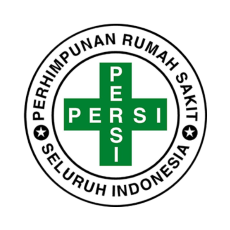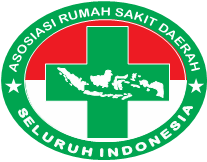Abstract
Critical values are abnormal values indicating high-risk/pathophysiological conditions that threaten the patient's life and require immediate medical intervention. Reporting critical laboratory values must be done quickly and accurately to the patient's responsible physician (DPJP) to ensure prompt and appropriate treatment. The aim of this study is to understand the reporting of critical laboratory values and its impact on the clinical decisions of doctors. This research uses both quantitative and qualitative methods with a descriptive analysis approach. Data collection was conducted through in-depth interviews, documentation, and observation. Informants were 15 DPJP. The results of this study show that the reporting system for critical laboratory values is functioning well/appropriately, with an average reporting time of 14.6 minutes, the fastest being 9 minutes, and the longest being 22 minutes. However, some DPJPs desire faster reporting times because the current system still uses manual methods, such as mobile phone calls or direct delivery of critical lab results to the ward by staff. Consequently, if there are disruptions in mobile phone service or a shortage of staff, it can take longer. Meanwhile, the timeliness of reporting and the accuracy of critical laboratory values in relation to the doctor's clinical decisions have been satisfactory/appropriate.
References
UURI. (2023). Undang-Undang Republik Indonesia Nomor 17 Tahun 2023 tentang Kesehatan. Jakarta: Republik Indonesia.
08Agustus2023 https://peraturan.bpk.go.id/Details/258028/uu-no-17-tahun-2023
Salawati, L. (2020) ‘Penerapan Keselamatan Pasien Rumah Sakit’, AVERROUS: Jurnal Kedokteran dan Kesehatan Malikussaleh, 6(1), p. 98. doi:10.29103/averrous.v6i1.2665.
Puspitasari, D. and Putra Danaya, B. (2022) “Pentingnya Peranan Komunikasi Dalam Organisasi: Lisan, Nonverbal Dan Tertulis (Literature Review Manajemen) ” , Jurnal Ekonomi Manajemen Sistem Informasi, 3(3), pp. 257–268. doi: 10.38035/jemsi.v3i3.817.
Komalasari, I. and Martha, E., 2023. Analisis Metode Pelaporan Nilai Kritis Laboratorium Pada Pasien Rawat Inap: Systematic Review. Darussalam Nutrition Journal, 7(2), pp.69-79.
Lippi, G. and Mattiuzzi, C. (2016) ‘Critical laboratory values communication: Summary recommendations from available guidelines’, Annals of Translational Medicine, 4(20), pp. 400–400. doi:10.21037/atm.2016.09.36.
Sumaidi, S., Zein, U. and Harahap, J. (2022) ‘Analisis Laporan Hasil Kritis pemeriksaan Laboratorium Terhadap pelayanan kesehatan pasien di Ruang Rawat inap Penyakit Dalam di Rumah Sakit Telaga Bunda Bireuen tahun 2019’, Jurnal Manajemen dan Administrasi Rumah Sakit Indonesia (MARSI), 6(1), pp. 50–56. doi:10.52643/marsi.v6i1.1935.
KMK RI. (2017). Keputusan Menteri Kesehatan Republik Indonesia Nomor. 308 Tahun 2017 Tentang Keselamatan Pasien. Jakarta: Kemenkes RI. Februari 05 2017 https://peraturan.go.id/id/permenkes-no-308-tahun-2017
KMK RI. (2022). Keputusan Menteri Kesehatan Republik Indonesia Nomor. HK. 01.07 /MENKES /1128/2022 Tentang Standar Akreditasi Rumah Sakit.Jakarta: Kemenkes RI. April 13 2022 https://yankes.kemkes.go.id/view_unduhan/59/kepmenkes-nomor-1128-tahun-2022
PMK RI (2022). Peraturan Menteri Kesehatan Nomor 30 Tahun 2022 tentang Indikator Nasional Mutu Pelayanan Kesehatan Tempat Praktik Mandiri Dokter dan Dokter Gigi, Klinik, Pusat Kesehatan Masyarakat, Rumah Sakit, Laboratorium Kesehatan, dan Unit Transfusi Darah. Jakarta: KemenkesRI. Oktober 12, 2022 https://peraturan.bpk.go.id/Details/245550/permenkes-no-30-tahun-2022
Joint Commission International. (2011) Joint Commission International accreditation standards for hospitals. 4th edn. Joint Commission International
Kuperman, G.J. et al. (1998) ‘How promptly are inpatients treated for critical laboratory results?’, Journal of the American Medical Informatics Association, 5(1), pp. 112–119. doi:10.1136/jamia.1998.0050112.
Kartikasari, D., Dewanto, A. and Saleh, M.S. (2014) ‘Pengembangan instrumen Penilaian Kualitas Layanan Rumah Sakit’, Jurnal Kedokteran Brawijaya, 28(1), pp. 1–7. doi:10.21776/ub.jkb.2014.028.01.14.
Piva, E. et al. (2009) ‘Evaluation of effectiveness of a computerized notification system for reporting critical values’, American Journal of Clinical Pathology, 131(3), pp. 432–441. doi:10.1309/ajcpys80bucbxtuh.
Soelistijo, S., Suastika, K., Lindarto, D & Decroli, E (2021) Pedoman Pengelolaan Dan Pencegahan Diabetes Melitus Tipe 2 Dewasa Di Indonesia, Jakarta: PB PERKENI
Direktorat Jenderal Pencegahan dan Pengendalian Penyakit. (2017) Petunjuk Teknis Pemeriksaan TB Menggunakan Tes Cepat Molekuler. Available at: https://kncv.or.id/publikasi/57-petunjuk-teknis-pemeriksaan-tb-dengan-tcm.html (dikutip, 24 Januari 2024)
Plebani, M. (2016). Harmonization of Clinical Laboratory Information – Current and Future Strategies. EJIFCC, 27, 15 - 22.
Nyoman Sindhu Adiputra, (2014) Analis Manajemen Pelaporan nilai kritis di Laboratorium Patologi Klinik Rumah Sakit Umum Pusat Sanglah denpasar, Universitas Indonesia Library. Available at: https://lib.ui.ac.id/detail?id=20389461&lokasi=lokal (Accessed: 12 November 2023).
Pai, S. and Frater, J.L. (2019) ‘Quality Management and accreditation in Laboratory Hematology: Perspectives from India’, International Journal of Laboratory Hematology, 41(S1), pp. 177–183. doi:10.1111/ijlh.13017.
Li, R. et al. (2019) ‘Enhance the effectiveness of Clinical Laboratory Critical Values Initiative Notification by implementing a closed‐loop system: A five‐year retrospective observational study’, Journal of Clinical Laboratory Analysis, 34(2). doi:10.1002/jcla.23038.
Masood, A. and Karim, M.Y. (2020) ‘The clinical approach on receipt of an unexpected laboratory test result’, International Journal of General Medicine, Volume 13, pp. 969–976. doi:10.2147/ijgm.s269299.
Bahasa Abstract
Nilai kritis adalah nilai abnormal yang menunjukkan kondisi patofisiologis berisiko tinggi ata mengancam nyawa pasien dan memerlukan tindakan medis segera. Pelaporan nilai kritis pemeriksaan laboratorium harus dilakukan secara cepat dan tepat kepada dokter penanggung jawab pasien (DPJP) agar dilakukan penanganan yang efektif dan efisien secara waktu. Tujuan penelitian untuk mengetahui gambaran pelaporan nilai kritis hasil pemeriksaan laboratorium terhadap keputusan klinis dokter. Metode penelitian menggunakan kuantitatif dan kualitatif dengan jenis penelitian deskriptif analisis. Pengambilan data dilakukan dengan wawancara mendalam, dokumentasi, dan observasi. Informan adalah 15 orang DPJP. Hasil dari penelitian didapatkan bahwa sistem pelaporan nilai kritis hasil pemeriksaan laboratorium sudah berjalan dengan baik, yaitu rata – rata waktu pelaporan adalah 14,6 menit, waktu tercepat 9 menit dan waktu terlama adalah 22 menit. Diskusi pada studi ini ditenggarai dengan beberapa DPJP yang menginginkan waktu pelaporan dapat dipercepat lagi dikarenakan sistem pelaporan masih menggunakan cara manual menggunakan telepon seluler atau petugas mengantar langsung dokumen hasil pemeriksaan ke ruangan. Hambatan terhadap cara manual adalah apabila terjadi gangguan seluler atau kurangnya petugas maka dokter tidak dapat segera menindaklanjuti masalah yang terdapat pada pemeriksaan tersebut. Rerata kesesuaian waktu pelaporan dan nilai kritis pemeriksaan laboratorium terhadap keputusan klinis dokter sudah berjalan dengan cukup baik.
Recommended Citation
Hidayat, Rahmat; Kurniawan, Entuy; Rahayu, Ira Gustira; and Wiryanti, Wiwin
(2024)
"ANALISIS PELAPORAN NILAI KRITIS HASIL PEMERIKSAAN LABORATORIUM DI RUMAH SAKIT MAYJEND HM RYACUDU KABUPATEN LAMPUNG UTARA,"
Jurnal ARSI : Administrasi Rumah Sakit Indonesia: Vol. 10:
No.
2, Article 1.
DOI: 10.7454/arsi.v10i2.1072
Available at:
https://scholarhub.ui.ac.id/arsi/vol10/iss2/1
Included in
Health and Medical Administration Commons, Health Services Administration Commons, Health Services Research Commons







